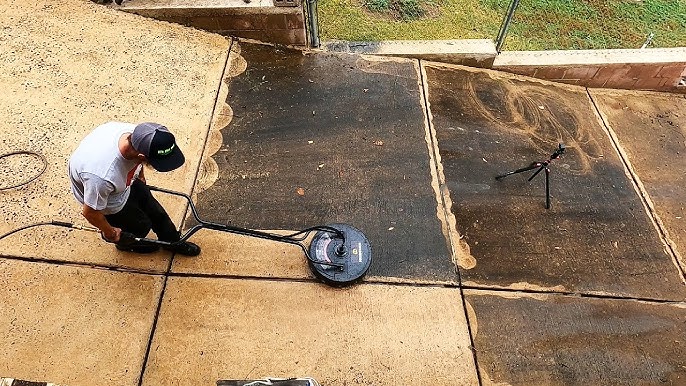
You’ve spent the afternoon power washing your deck, driveway, siding — or all three. You step back, expecting a sparkling clean surface, but instead you’re left wondering: Why is it still dirty? 😩
It’s a frustrating feeling, and you’re not alone. Many homeowners are surprised when power washing doesn’t instantly deliver the clean results they expected. Let’s explore why your surfaces may still look dirty after power washing, and what you can do to fix it. 💧🧠
🔍 Common Reasons Surfaces Still Look Dirty After Power Washing
1. Incorrect Pressure or Nozzle Setting 🔫
The most frequent cause of unsatisfactory results? Using the wrong PSI or spray tip.
- Low pressure may not penetrate porous surfaces like concrete or wood
- High pressure with a narrow nozzle may clean unevenly, leaving streaks or shadows
🧠 Fix:
- Use the correct PSI (typically 2,500–3,000 for concrete, 1,200–1,800 for siding or decks)
- Choose a 25° or 40° nozzle for balanced cleaning
- Keep a consistent 12–18 inch distance from the surface
2. Not Using Detergent or Pre-Treatment 🧴
Power washing with water alone may not lift:
- Oil stains
- Mold or mildew
- Algae and moss
- Deep-set grime
🧠 Fix:
Apply a surface-appropriate cleaner before washing. Let it sit for 5–10 minutes (called “dwell time”) to break down dirt and organic material.
💡 For concrete: Use a degreaser
💡 For siding: Use a mold/mildew remover or general-purpose detergent
Browse Amazon Here For Popular Power Washing Detergents
3. Skipping Surface Agitation 🧽
Some stains, especially organic or greasy ones, need scrubbing to fully break loose. Power washing alone doesn’t always do the trick.
🧠 Fix:
Use a stiff-bristled brush to agitate detergents before rinsing — especially on:
- Wood decks
- Brick or stone
- Heavily soiled concrete
4. Not Rinsing Properly or Evenly 💦
Uneven spray patterns, standing water, or leftover detergent can leave surfaces looking patchy or streaked.
🧠 Fix:
- Rinse thoroughly with wide, overlapping strokes
- Start from the top and move downward on vertical surfaces
- Use fresh water only (no soap) for final rinsing
5. Embedded Stains or Mineral Deposits 🧱
Stains like rust, calcium, or oil can penetrate deep into surfaces — especially porous ones like:
- Driveways
- Pavers
- Patios
- Brick walls
These may not come out with pressure alone.
🧠 Fix:
Try a targeted chemical treatment after power washing, like:
- Rust remover
- Concrete brightener
- Efflorescence cleaner
Be sure the product is safe for the surface you’re treating.
6. Sunlight Drying the Soap Too Fast 🌞
Washing in direct sunlight on a hot day can cause soap or degreaser to dry before it finishes breaking down grime.
🧠 Fix:
- Wash early in the morning or late in the afternoon
- Work in small sections
- Mist the area with water to keep it damp while cleaning
7. Old or Worn Surface Damage 🧓
Sometimes, surfaces look “dirty” not because of grime — but because the surface is stained, aged, or damaged.
Examples:
- Concrete with permanent tire marks or oil penetration
- Faded wood deck boards that appear gray
- Discolored siding from UV exposure
🧠 Fix:
These may need restoration, not just cleaning. Consider:
- Staining or sealing wood after cleaning
- Applying a concrete restorer
- Painting or re-coating faded siding
8. Residual Mold or Algae Spores 🍃
If you’ve cleaned green or black staining, it might look like it’s gone — but spores can remain, especially in shaded or damp areas.
🧠 Fix:
Use a mildew- or mold-specific cleaner and allow it to dwell for 10+ minutes. A follow-up rinse ensures complete removal.
Browse Amazon Here For Popular Mildew Cleaners
🧪 Still Not Clean? Try These Extras
- Use a surface cleaner attachment for large driveways or patios — provides consistent pressure and coverage
- Switch to hot water power washing for grease and oil
- Hire a professional with commercial equipment for deep stains
🛑 What Not to Do
- ❌ Don’t increase pressure beyond surface-safe limits
- ❌ Don’t keep spraying one spot — it can damage surfaces
- ❌ Don’t mix cleaners randomly — chemical reactions can be harmful
- ❌ Don’t forget to protect landscaping from runoff
🧠 Bonus: Power Washing Prep Checklist
Before your next wash:
✅ Sweep and pre-rinse the area
✅ Apply surface-specific cleaner
✅ Let detergent dwell for 5–10 minutes
✅ Scrub problem spots
✅ Rinse thoroughly, evenly, and from the correct distance
✅ Inspect for stains that require separate treatment
🏁 Final Thoughts
So, why is your surface still dirty after power washing? Most likely, it’s one (or more) of these reasons:
- Inadequate pressure
- No detergent
- Skipped scrubbing
- Uneven rinsing
- Or stains that need deeper treatment
But don’t worry — you’re not doing it wrong. You just need to adjust your method to match your surface and stains.
With the right cleaner, pressure, and technique, your next power wash will deliver the deep clean you’re looking for. 💪🧼✨
Browse Amazon Here For Top Rated Power Washers And Accessories






